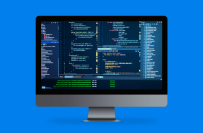
Skilled Editor for Clear and Engaging Content
$15-25 AUD / 시간
종료됨
게시됨 15일 전
$15-25 AUD / 시간
#A Key to Crafting Clear and Polished Writing
Editing is a crucial step in the writing process, transforming a rough draft into a polished and coherent piece. It involves more than just correcting spelling and grammar errors; it requires a deep engagement with the text to ensure clarity, coherence, style, and accuracy. Writers and editors alike employ various techniques to improve a text, each serving a specific purpose in enhancing the overall quality of the writing. Below are some essential editing techniques that can significantly elevate a piece of writing.
#### 1. **Structural Editing**
Structural editing focuses on the organization of ideas within the text. This technique involves ensuring that the structure of the piece is logical and that the ideas flow coherently from one paragraph or section to the next. Key steps in structural editing include:
- **Assessing the organization**: Ensure the introduction, body, and conclusion are well-structured, and that each section serves its purpose.
- **Reordering sections or paragraphs**: Sometimes, rearranging content can improve the flow and clarity of an argument.
- **Eliminating redundancy**: Repetitive ideas or sentences that do not contribute to the central theme should be removed to maintain focus and brevity.
A well-structured piece is not only easier to read but also more compelling and persuasive.
#### 2. **Line Editing**
Line editing focuses on the sentence level, scrutinizing each line for clarity, style, and effectiveness. This technique involves revising sentences to make them more concise, impactful, and easier to read. Key aspects of line editing include:
- **Sentence clarity**: Rewriting sentences that are overly complex, confusing, or awkwardly worded.
- **Conciseness**: Eliminating unnecessary words, phrases, or redundancies. For example, instead of saying "in the event that," you could simplify it to "if."
- **Tone and style**: Ensuring that the voice and tone of the writing match the intended audience and purpose. For instance, a formal essay may require a different tone compared to a personal blog post.
- **Varying sentence structure**: Mixing short, punchy sentences with longer, more complex ones can create rhythm and maintain reader interest.
Line editing is about refining the text to improve readability and overall impact.
#### 3. **Copy Editing**
Copy editing involves checking for technical aspects of writing, such as grammar, punctuation, spelling, and consistency. It is often the most meticulous phase of editing, ensuring that the text adheres to proper language conventions. Common tasks in copy editing include:
- **Correcting grammar and syntax**: This includes fixing subject-verb agreement, tense consistency, and sentence fragments.
- **Punctuation and spelling**: Ensuring correct use of punctuation marks (e.g., commas, periods, apostrophes) and the accuracy of spelling.
- **Consistency**: Checking for consistency in spelling (e.g., British vs. American spelling), formatting (e.g., font size, headings), and style guide adherence (e.g., APA, MLA, Chicago).
Copy editing ensures that the text is error-free and adheres to the necessary conventions, making it more professional and credible.
#### 4. **Proofreading**
Proofreading is the final stage of editing and involves carefully reading the text to catch any lingering errors. While similar to copy editing, proofreading focuses specifically on surface-level issues, such as:
- **Typographical errors**: Correcting mistakes in spelling, punctuation, or formatting that may have been overlooked during earlier stages.
- **Final checks**: Ensuring that no small, but significant, errors (e.g., missing words, misplaced commas, or inconsistent font) disrupt the flow or meaning of the text.
Proofreading is a vital step in ensuring that a document is polished and ready for publication.
#### 5. **Peer Editing and Feedback**
While traditional editing is often done by a single editor or writer, peer editing is another valuable technique, especially in collaborative or academic settings. Peer editing involves having another person read and critique the work. This process can highlight issues that the original writer might have missed, such as unclear arguments or weak transitions. Peer feedback also provides a fresh perspective on the writing, potentially offering new insights or suggestions for improvement.
Peer editing is particularly beneficial because it introduces external viewpoints, helping to catch errors that might be overlooked in isolation.
#### 6. **Using Editing Tools**
In today’s digital age, many writers and editors rely on editing tools to streamline the process. Programs like Grammarly, ProWritingAid, and the Hemingway Editor can help identify grammatical mistakes, improve readability, and suggest stylistic improvements. While these tools should not replace human editing, they can be valuable for initial drafts or for spotting common errors quickly. However, it’s important to remember that editing software can miss context-specific nuances, so human oversight is essential.
#### 7. **Reading Aloud**
One simple yet powerful editing technique is reading the text aloud. This can help the editor catch errors related to rhythm, awkward phrasing, or unclear meaning. When reading silently, our brains tend to overlook mistakes, but reading aloud forces us to slow down and pay attention to each word. This technique is particularly helpful for detecting issues with flow, sentence structure, and tone.
### Conclusion
Editing is an essential skill that can make the difference between good writing and great writing. By employing a combination of structural, line, copy editing, proofreading, peer feedback, and using modern tools, writers can refine their work and ensure it effectively communicates their intended message. With practice and attention to detail, editing techniques help create clear, compelling, and polished writing that engages readers and stands out in any context.
프로젝트 ID: 38880637
프로젝트 정보
14 제안서
원격근무 프로젝트
활동 중 8일 전
돈을 좀 벌 생각이십니까?
프리랜서 입찰의 이점
예산 및 기간 설정
작업 결과에 대한 급여 수급
제안의 개요를 자세히 쓰세요
무료로 프로젝트에 신청하고 입찰할 수 있습니다
14 이 프로젝트에 프리랜서들의 평균 입찰은 $20 AUD입니다./시간

4.8
(9 건의 리뷰)
3.0
3.0

0.0
(0 건의 리뷰)
0.0
0.0

0.0
(0 건의 리뷰)
0.0
0.0

0.0
(0 건의 리뷰)
2.4
2.4

0.0
(0 건의 리뷰)
0.0
0.0

0.0
(0 건의 리뷰)
0.0
0.0

0.0
(0 건의 리뷰)
0.0
0.0

0.0
(0 건의 리뷰)
0.0
0.0

0.0
(0 건의 리뷰)
0.0
0.0

0.0
(0 건의 리뷰)
0.0
0.0
고객에 대한 정보

Sambalpur, India
0.0
0
4월 3, 2024부터 회원입니다
고객 확인
유사한 프로젝트
₹750-1250 INR / 시간
$30-250 USD
$250 CAD
$250-750 USD
$25-50 USD / 시간
$235 HKD
$25 USD
£10-20 GBP
₹600-1500 INR
₹1250-2500 INR / 시간
$50 USD
₹12500-37500 INR
$250-750 USD
$250-750 USD
$300-400 USD
₹1500-12500 INR
$10-30 USD
₹12500-37500 INR
$10 USD
₹1500-12500 INR
감사합니다! 무료 크레딧을 신청할 수 있는 링크를 이메일로 보내드렸습니다.
이메일을 보내는 동안 문제가 발생했습니다. 다시 시도해 주세요.
미리 보기 화면을 준비 중...
위치 정보 관련 접근권이 허용되었습니다.
고객님의 로그인 세션이 만료되어, 자동으로 로그아웃 처리가 되었습니다. 다시 로그인하여 주십시오.























